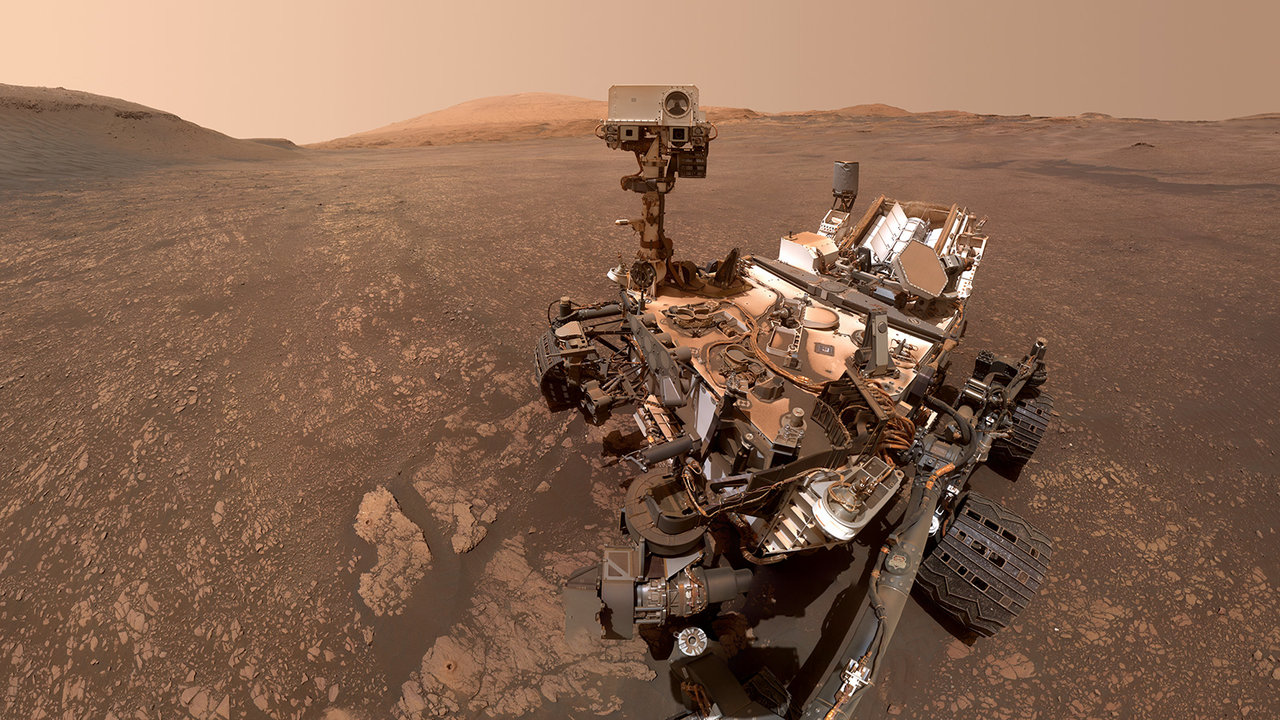Strange underground polygons on Mars hint at Red Planet's wet past
The newfound honeycomb fractures are the "most compelling evidence to date" that Mars was tilted more extremely than it is today.

Buried dozens of meters under the equator of Mars is a large honeycomb pattern similar to what's found near Earth's frigid poles.
Each crevasse spans 70 meters (230 feet) — about half a football field — and is bordered by 30-meter-wide (98-feet-wide) slurries of ice and mud. It's likely, scientists say, that this material is somewhere between 2 billion and 3.5 billion years old. The patterns were spotted in the data sent home by China's now-incommunicado Zhurong rover which explored an expansive, bumpy region north of Mars' equator named Utopia Planitia.
Zhruong rolled just a little over one kilometer (0.6 miles) toward Mars' southern region in that one year, but even during such a short trip, its radar had sensed a continuous pattern of 15 buried polygons — suggesting there may be more waiting to be found, study lead author Lei Zhang of the Chinese Academy of Sciences told Space.com in an email.
On Earth, similar patterns are known to form only in Greenland, Iceland and Antarctica when drastic temperature dips caused by seasonal changes contract and fracture the ground. Ice and mud that sometimes fill these cracks stops them from ever healing, causing the surface to eventually split further. A similar process on Mars, some 2 billion to 3.5 billion years ago, would have caused the newly detected crevasses, which are tens of meters larger than any found on our planet. "These polygons are huge," said Zhang.
Related: China could use a foldable helicopter to collect samples on Mars
This discovery, in short, provides fresh evidence that the Red Planet once hosted water and a friendly climate to life as we know it.
Puzzlingly, the pattern also suggests tropical regions on Mars were cold enough to cause cracks similar to those seen near Earth's icy pole. The mystery could be answered by an existing (but unproven) theory that suggests Mars was once a lot more tilted on its axis than it is today — up to forty degrees or more — approximately 5 million years ago. "Such an extremely tilted scenario muddies the waters between thinking of polar regions as cold and low-latitudes as warm," Zhang said.
Breaking space news, the latest updates on rocket launches, skywatching events and more!
William Rapin, a scientist at the Institut de Recherche en Astrophysique et Planétologie in Paris, who was not affiliated with the new research, says the newfound buried polygon pattern is "an interesting find" and would help understand the inner workings of a critical period on Mars which may have been hospitable toward life. Rapin was part of a team that recently found similarly shaped, centimeter-sized mud cracks on the Martian surface near the Gale crater presently being explored by NASA's Curiosity rover.
Accessing areas from a similarly ancient period on Earth is difficult because our planet routinely recycles its surface. But on Mars, "we have all those strata in very good condition," Rapin said. "So we can investigate an era that was maybe favorable for the origin of life itself."
Mars' tilt or obliquity has shifted over the past 3.5 billion years. If it weren't tilted at all, its equator would be the warmest due to receiving the most direct sunlight, and temperature would dip toward the poles. But computer models show the wobbly planet was excessively tipped a few million years ago, meaning that where sunlight landed changed throughout the year. For half of its orbit around the sun, about six months, Mars in this epoch experienced nights that "reached" as far as its equator, Rapin said.
Mars' tilt has been known to vary more than Earth's does, having shifted by more than ten degrees over 100,000 years. In fact, that change is what scientists believe caused such dramatic changes to its climate, turning it from a once-blue oasis to the arid red land we presently see. But the newly detected polygon pattern could help scientists narrow down exactly when those drastic climate changes occurred, said Zhang.
The fact that the pattern was detected 35 meters (115 feet) below the surface "means the polygons formed, developed over some time, but then stopped suddenly," he explained. Martian soil in the recent past must not have experienced the same temperature swings, causing it to layer on top of those crevices. "The time that the polygons stopped might be a time that the climate changed — suddenly shifting from a quite cold to a quite nice, temperate climate."
The Zhurong rover went silent late last year after it failed to wake up from its scheduled hibernation, and scientists presume it succumbed to Mars' heavy dust storms. Meanwhile, NASA's Curiosity rover, which notched 4,000 days on Mars last month, will reach a terrain next year pockmarked with fractures large enough to be seen from orbit. Rapin hypothesizes those may represent the occurrence of an ancient, extreme drought and hopes to compare them to the newfound polygons at Utopia Planitia.
"They are pretty far," said Rapin. "It's kind of a dream that we reach them."
This research is described in a paper published last month in the journal Nature Astronomy.

Sharmila Kuthunur is an independent space journalist based in Bengaluru, India. Her work has also appeared in Scientific American, Science, Astronomy and Live Science, among other publications. She holds a master's degree in journalism from Northeastern University in Boston.

